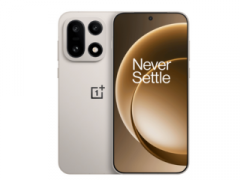- Home
- Mobiles
- Mobiles Features
- Samsung is Making Meaningful Innovations Accessible to Everyone: Akshay S Rao, Director, MX Business, Samsung India
Samsung is Making Meaningful Innovations Accessible to Everyone: Akshay S Rao, Director, MX Business, Samsung India
Samsung is planning to hit the 60 million mark in sales with the latest Galaxy M17 5G.

Samsung is one of the few players in the Indian smartphone industry that has a wide lineup across different price segments. The company has made its strong presence in the premium segment with its Galaxy S and Galaxy Z series, while the A and FE series offers a variety in the mid-range and mid-premium segment. However, it is the Galaxy M-series that has become the company's knight in shining armour to compete in the budget-centric segment. With the launch of the Samsung Galaxy M17, the tech giant is planning to take this legacy up a notch, specifically in the sub-Rs. 15,000 price segment.
We have seen multiple smartphones from different manufacturers in this segment that try to stand out in terms of features or design. However, for Samsung, it is more than that. The company looks at this segment as a way to provide meaningful innovations to the masses. In an exclusive conversation with Gadgets360, Akshay Rao, Director, MX Business, Samsung India, revealed Samsung's broader strategy, what consumer-based feedback helps shape the products, and more.
Balancing Affordability with Innovation
Samsung's smartphone portfolio caters to a wide price bracket. The company has its presence right from the sub-Rs. 10,000 entry-level devices to Rs. 2 lakh flagship foldables. Yet, Rao insists that Samsung's philosophy remains consistent: “At every price segment, our philosophy is very clear — we want to deliver whatever is the best that we can offer in that price segment.”
He further adds that this is also true with the latest Samsung Galaxy M17 5G. Rao explained that Samsung wants to shatter the perception that budget buyers must compromise on key features. “With the Rs. 10,000 to Rs. 15,000 price point, the tendency is that consumers feel they have to compromise on a lot of things. That's where the M17 really stands out,” he said.
The latest smartphone from Samsung comes with an interesting set of features that are scarce in this price segment. These include a 50-megapixel OIS (Optical Image Stabilisation) camera, a slim 7.5mm design, Corning Gorilla Glass Victus, Super AMOLED screen, useful AI features, and more.
Listening to Customers Help Build Better Products
According to Rao, consumer feedback is at the heart of every M-series making process. He explains that the company takes feedback from the customers about the pain points for that particular segment and tries to incorporate those features in the latest launches. So, for example, he adds that in the sub-Rs. 15,000 segment, customers want durability, ease of use, and a reliable camera.
“Consumers want access to something that's a little above their budget,” he said. “They don't want to be stuck with blurred photos and later wonder ‘what if.' That insight is exactly why we brought in OIS — to give them the clarity they deserve.”
Rao added that Samsung's approach to the Galaxy M17 also included delivering a full ecosystem experience. “It's a complete package — camera, display, great design, durability, and even AI features,” he said.
Bringing AI to Everyone
Rao further added that the company is trying to bring meaningful innovations accessible to the masses. And with the Galaxy M17, the tech giant is trying to democratise AI. “ With Samsung Galaxy M17, we have brought AI features like Circle to Search and Gemini Live to a Rs. 10,000 to Rs. 15,000 price point,” Rao said. “We will continue to find opportunities based on consumer feedback to make these technologies more accessible,” he further added.
Differentiating the Galaxy Trio: Galaxy M, Galaxy F, and Galaxy A Series
Samsung has three different series that target almost the same price segment. We have the Galaxy M, Galaxy F, and Galaxy A series that are often priced at similar price points, which can confuse many. However, as per Rao, each series is positioned to address a different type of consumer.
He added that the company focuses on micro-segments for each series, and the differentiation is usually achieved through a combination of design language, form factor, and core value proposition. "Some are more on the like, the monster innovation about performance, being in great new technology, while others are maybe an all-rounder kind of positioning," he elaborated.
“Today, it's not just about what's inside the phone. It's also about how the device fits into a consumer's lifestyle and how it complements their daily usage,” he further added.
Festive Season and Premiumisation Trend
When asked if there is any difference between this year's and last year's festive seasons, Rao said the company has seen significant growth, especially in the premium segment this year. “We are actually growing by around 40 percent year-on-year, especially in the Rs. 30,000+ segment, which is well ahead of the estimated industry average.”
He also mentioned that one of the key trends he noticed this year was of premiumisation. He said that customers are willing to upgrade to a premium device, all thanks to easy financing, cashback offers, and wider availability of the brand's smartphones across online and offline channels.
“It's not just about bringing a product, but how easily we make it accessible at the numerous touch points, whether offline or online. And that's where I think all of those viewers have helped us grow by about 40 percent. The Galaxy M17, with the affordable price point and the innovation it brings in, will help us with the affordable price point growth as well,” he further explained.
The Way Ahead for Galaxy M series
The Samsung Galaxy M series will complete six years with the latest launch of the Galaxy M17. Rao is hopeful that the Galaxy M series could cross 60 million units in cumulative sales by the end of this year. "With the significant improvements that we are bringing in OIS technology, the durability improvement, so all of that put together. We are sure this product will also do well, and it will help us with our outlook for the Galaxy M series.”
Get your daily dose of tech news, reviews, and insights, in under 80 characters on Gadgets 360 Turbo. Connect with fellow tech lovers on our Forum. Follow us on X, Facebook, WhatsApp, Threads and Google News for instant updates. Catch all the action on our YouTube channel.
Related Stories
- Samsung Galaxy Unpacked 2025
- ChatGPT
- Redmi Note 14 Pro+
- iPhone 16
- Apple Vision Pro
- Oneplus 12
- OnePlus Nord CE 3 Lite 5G
- iPhone 13
- Xiaomi 14 Pro
- Oppo Find N3
- Tecno Spark Go (2023)
- Realme V30
- Best Phones Under 25000
- Samsung Galaxy S24 Series
- Cryptocurrency
- iQoo 12
- Samsung Galaxy S24 Ultra
- Giottus
- Samsung Galaxy Z Flip 5
- Apple 'Scary Fast'
- Housefull 5
- GoPro Hero 12 Black Review
- Invincible Season 2
- JioGlass
- HD Ready TV
- Laptop Under 50000
- Smartwatch Under 10000
- Latest Mobile Phones
- Compare Phones
- Honor 500
- Honor 500 Pro
- Lava Agni 4
- Wobble One
- OPPO Reno 15 Pro
- OPPO Reno 15
- Vivo Y500 Pro
- Realme GT 8 Pro Aston Martin F1 Limited Edition
- Asus ProArt P16
- MacBook Pro 14-inch (M5, 2025)
- iQOO Pad 5e
- OPPO Pad 5
- Huawei Watch GT 6 (41mm)
- Huawei Watch GT 6 (46mm)
- Acerpure Nitro Z Series 100-inch QLED TV
- Samsung 43 Inch LED Ultra HD (4K) Smart TV (UA43UE81AFULXL)
- Asus ROG Ally
- Nintendo Switch Lite
- Haier 1.6 Ton 5 Star Inverter Split AC (HSU19G-MZAID5BN-INV)
- Haier 1.6 Ton 5 Star Inverter Split AC (HSU19G-MZAIM5BN-INV)


















